Please sign in first
Not a member?

- Home
- Online Education Programs
- THE 3-DAY “NOT FOR BEGINNERS” GEM IDENTIFICATION CLASS
- ISG Credentials
- Frequently Asked Questions
- Registry of Graduates
- Careers in Gemology
- Important Program Information
- back
- About the ISG
- Why is the ISG Tuition So Low?
- Testimonials of ISG Students and Graduates
- Meet Your Instructor for your ISG education
- ISG Best Online Gemology School
- Graduate Support Programs
- Ishihara Color Vision Test
- Privacy Policy
- Newsletters
- back
- The Story of Ruby
- Turquoise Investigation by the ISG
- The Story of Petrol Quartz
- Top 5 Myths About Jewelry Insurance Appraisals
- The Story of Time
- The Story of Freshwater Pearls
- The Story of Agates and Jaspers
- Susan Bailey v. Frantz Jewelers, et al.
- The Story of Blue Topaz
- The Story of Tibet Andesine
- The Story of Oregon Sunstone
- The Story of Created Moissanite
- Identifying Lab Created Diamonds
- Black Diamond or Created Moissanite?
- Ebay, the GIA, and Section 230
- Lessons From the Angry Janitor
- Exposing the Truth about Lab-Created Diamonds
- AGTA Hobbles Dealers and Buyers
- Appraisers -v- Gem Labs…a Legal Imbalance!
- Understanding the Classification of Diamonds
- Cremation Diamonds: Insuring and Litigating
- Let’s Talk About Gemology Credentials
- Hometown Jewelers and the Force Majeure Clause
- Following the Critical Angle of Diamond Grading
- When Breitling Brought the Airmen Home
- Let’s Open a Refractometer
- Measuring the Energy of Light
- Quick Reference Guide to Sunstone
- ISG Seeing the Invisible Light
- Contact Us
When Breitling Brought the Airmen Home
When Breitling Brought the Airmen Home

Editor’s Note: This is a true story as told to me by a retired WWII B-17 pilot when I worked at USAA. It is a remarkable story of valor and honor, and a commitment to quality that helped win a war.
Before there was Global Positioning Satellites and computer-generated navigation, pilots relied on simple instruments to help them navigate from one point to the next. Critical to this navigation was the chronometer that told them not only how long they had been in the air, but also allowed them to check relative time against the sun time to establish their locations. The problem was that chronographs were large clocks that were burdensome on small aircraft of the early flying periods. This made for very difficult navigation since no quality time piece was available that provided both the accuracy and the portability that pilots required.
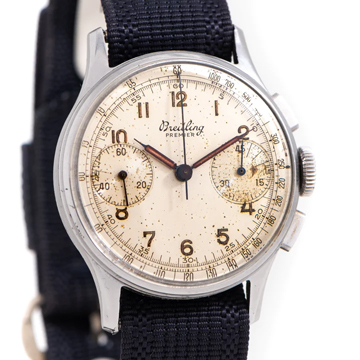 This all changed in 1915, however, when Breitling introduced the first chronograph wrist watch and provided it to pilots. This would set the company on a path that would lead them into the history books, and allow many wayward pilots to find their way home.
This all changed in 1915, however, when Breitling introduced the first chronograph wrist watch and provided it to pilots. This would set the company on a path that would lead them into the history books, and allow many wayward pilots to find their way home.

B17 and B24 and B25 World War Two Bombers.
In 1936 Breitling became the official watch supplier to the Royal Air Force. In 1942 Breitling expanded its military supplier role by becoming supplier to the United States Armed Forces. That is where our story begins……
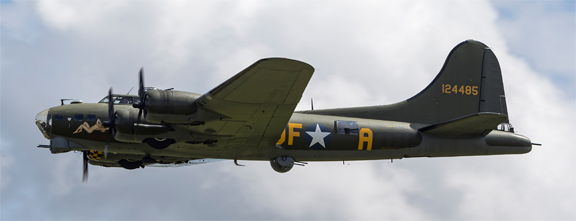
 USAA is the fourth largest insurance company in the United States. They insure only US military and government service personnel and families.
USAA is the fourth largest insurance company in the United States. They insure only US military and government service personnel and families.
Until just the past few years the company only insured military officers, having been started in 1925 by a group of Army Air Services pilots stationed here in San Antonio Texas. It seems that in 1925 the reality of flying machines was so new and considered so daring that only the foolhardy were thought to participate.
That, of course, included military pilots of the day. The real problem for the early military pilots was that they could not get car insurance. Seems that the insurance companies of the day figured if someone was foolhardy enough to fly an airplane they would be foolhardy as drivers also. Anyone who would dare take a chance flying an airplane was much too big of a risk for car insurance.
The result was that these pilots stationed at San Antonio could not get car insurance, so they started the United Services Automobile Association and everyone put in a few dollars a month and they all insured each other. This grew into the modern-day USAA insurance which is the largest insurer of US military.
During my five years at USAA I had the honor of working with some of the retired military officers from World War II. These folks were without a doubt the finest group I have ever worked with. And tell stories………boy could these guys tell some stories. At every opportunity I would listen as long as I could as I knew that it would not be long until these guys were no longer with us, and all of these wonderful experiences and memories would be lost forever.
While dealing with one lost Breitling watch claim I got to speak to the retired “full bird” Colonel about why he had always worn a Breitling watch. He told me without hesitation that it was because a Breitling chronometer once saved his life…..
Skies over Western Europe…..1944
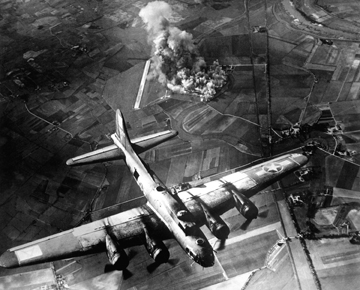
B-17 Bomber during the first big raid on Germany by the U.S. 8th Air Force. The raid destroyed most of the Marienburg Focke-Wulf aircraft factory. World War 2. October 9, 1943
In 1944 this gentleman was the pilot on a Boeing B-17 Flying Fortress on a bombing mission over Germany. Navigating the bomb run was fairly easy (as he told it) because you would fly south at a certain air speed for a certain amount of time, then make a turn to port (left turn) and fly at a certain speed for another period of time.
After “x” amount of time had passed if you had kept your records properly you would be near your target. On this B-17, the time was recorded using their Breitling chronometer that was mounted into the instrument panel of the plane, along with all the other dials, lights, and control switches.
The inbound flight was extremely difficult. The US air crews took the daylight raids which were considered the most dangerous because the German Luftwaffe could see them coming and fly up to meet them. The flak was heavy and the sustained damage to the aircraft was major.
Once the bombing run was complete the Colonel (who was a Captain at the time) banked the plane at the right time and headed for home. That’s when things got really bad.
When they turned and headed west the weather closed in on them. Visibility went down to almost zero. What made matters worse was that the plane’s instrument panel had been virtually blown away by the incoming flak from the German AA guns, leaving little more to fly with than one instrument that had survived all of the incoming shrapnel and violent shaking from explosions. That’s right, the only instrument they had that survived was the Breitling chronometer that had been built strong enough to withstand all that the Luftwaffe could throw at them.
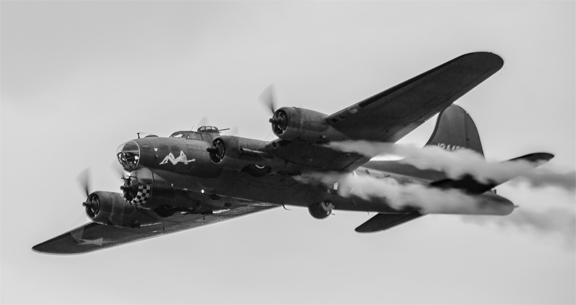
Most of the crew members were severely injured and needed help fast, the plane was shot to pieces, visibility was extremely limited, and the Colonel and his navigator had only one instrument working, the Breitling chronometer.
Flying on dead reckoning often results in defining itself. You simply fly the direction you THINK you should fly when all else fails. Herein was the problem….the Colonel had to fly back the same way he came in since he had no ability to navigate otherwise. To do that he had to fly west for a certain amount of time and at a certain speed, then turn north and fly until he found the English coastline. The obvious problem was that he had to make the turn to starboard (right turn) at just the right time or he would miss the English coastline and fly into the North Atlantic Ocean until he ran out of fuel.
The only instrument he had working was the one instrument he needed….the Breitling chronometer.
After a horrendous bombing run that took out many of his crew and all but one of his instruments, the housing for his Breitling chronometer was bent up from German flak and scored from heat, but the Breitling continued to click away the seconds in spite of it all.
The Colonel flew west based on dead reckoning of the brightest light he had in the sky to follow, which fortunately happened to be the sun in the occasional breaks in the clouds.
He flew for the period of time that his Breitling chronometer told him to fly until it was time to turn north. This was a one shot turn. Do it at the right time and you find England. Too soon or too late and you are listed as MIA until the end of the war when you become KIA.
In spite of all it had been through on this bombing run, the Breitling chronometer was accurate to the second. The plane made the turn to the north based on the time that the beat-up Breitling chronometer told them. Finally and right on time, the Colonel saw the white cliffs and knew that he and his crew had made it home.
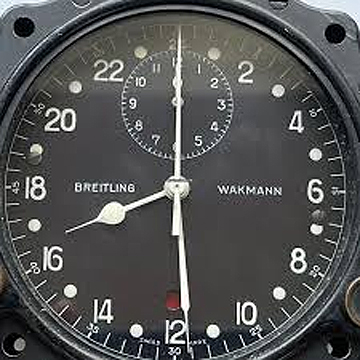 At left is an example of a Breitling aircraft chronometer similar to the one on the Colonel’s B-17 from chrono24.
At left is an example of a Breitling aircraft chronometer similar to the one on the Colonel’s B-17 from chrono24.
The Colonel had a tear in his eye when he told the end of the story. No way I can tell it with the intensity that he told it that day. The reality of just how bad that B-17 was shot up, the instrument panel being virtually blown away, the crew injured to a man, the only thing that survived intact on the whole plane was the battered up Breitling chronometer that was what they needed to get back home.
The Colonel told me that someone took that chronometer out of the plane and took it home with them. He wished it could have been him. Ever since that day the Colonel has worn a Breitling watch. We, in the claims replacement division of USAA, made sure that he got his lost Breitling watch replaced.

Since that conversation I have never seen the Breitling name or logo without thinking of the Colonel and his flight home.
Over the five year period I was with USAA I got to speak with many retired WWII bomber pilots and crew members. To a man they talked about how the one instrument that always left with them, and always came home with them, was the Breitling chronometer in the instrument panel.
That is the legacy that Leon Breitling started in 1884, and why we study watches as part of the ISG Registered Gemologist Appraiser program.
With our deepest appreciation and respect for all US Military Personnel, and your families. Thank you for your sacrifice to keep us all safe from tyranny, and to keep evil away from our doors. Thank you especially to all Gold Star families for your sacrifice. You will never be forgotten.
Robert James FGA, GG
President, International School of Gemology